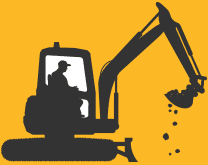
Watching over the grid: How FortisAlberta keeps power safe and reliable during wildfire season
Sep 4, 2025, 15:14 PMAt FortisAlberta, our work never stops. As Manager of the Control Centre, I lead a team responsible for monitoring the more than 133,000 kilometers of power lines and 1.1 million power poles that make up our electric distribution system: 24 hours a day, 365-days a year. We are vigilant, and it becomes even more critical during wildfire season, when risks are heightened and challenges more complex.
Forward-thinking wildfire strategy
Wildfires pose a significant threat to the communities we serve and to the infrastructure that powers them. The high-voltage lines we operate stretch across vast and varied terrain, exposed to the elements and vulnerable to environmental stressors. During wildfire season, we proactively reduce risks, safeguard critical infrastructure and respond swiftly, leveraging FortisAlberta’s comprehensive wildfire mitigation strategy.
We track environmental conditions, current fires and hot spots layered with real-time maps that include data provided by Alberta Wildfire, Alberta Agriculture and Environment Canada and our strategically placed weather stations. These tools help us make informed decisions quickly—whether it’s rerouting power to keep the lights on, dispatching crews or proactively de-energizing lines in high-risk areas.
The wildfire risks we manage every day
We design our system to be resilient, but nature is unpredictable. Here are just a few of the risks we manage to prevent wildfires and ensure reliable service:
- Animal interference: Birds and squirrels can cause equipment faults that lead to sparks. Our Avian Protection Plan helps reduce these risks through specialized equipment and partnerships with wildlife rehabilitation centres.
- High winds and vegetation: Strong winds can knock trees or branches into power lines. That’s why our Forestry team works year-round to manage vegetation and reduce the risk of contact. We also harden the grid in higher risk areas with the use of covered conductors, sometimes combined with spaced aerial cable systems to insulate against sparks and arcing even if debris contacts the line.
- Contaminants on insulators: Road salt, dust and other debris can build up on insulators, leading to electrical tracking and even pole fires. We conduct regular inspections and maintenance to stay ahead of these hazards.
- Downed lines: If a line contacts the ground or vegetation, our automated systems can de-energize it in a fraction of a second—especially in high-risk zones.
- Insulator failures: Insulators are critical components that keep electricity flowing safely. If they fail, they can cause current to arc to the ground, potentially sparking fires. We use aerial patrols, drones and advanced technologies, like early fault detection and gridware sensors, to monitor and maintain these components.
- Fuses and system faults: Traditional fuses can emit hot metal when they operate. In critical areas, we use non-expulsion and current-limiting fuses, and we adjust system settings—such as disabling auto-reclose functions during high-risk periods to prevent ignition.
Keeping our employees and communities safe while ensuring reliable power delivery is at the core of everything we do. That’s why we’re always working to strengthen the grid. This includes upgrading equipment, improving how we monitor the system and using data to prevent issues before they arise.
To reduce wildfire risks, we used advanced tools and technologies to detect faults (the brief flicker you might see when your lights blink) and prevent them from automatically re-energizing (referred to as disabling automatic-reclose functions) during high wildfire risk conditions. Our work may not always be visible, but it’s essential. Every decision we make in the Control Centre is driven by one purpose: working safely and keeping the lights on.
As wildfire season intensifies, so does our commitment. We’re ready—every hour, every day.
To learn more about our wildfire risk mitigation strategies visit: www.fortisalberta.com/wildfiresafety

